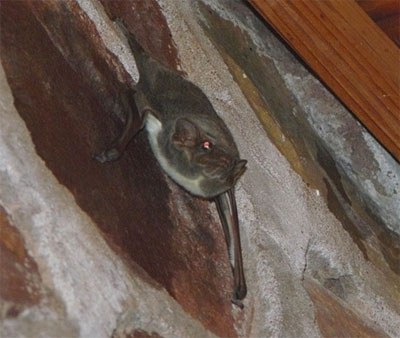Identification pointers
This bat can be easily recognised when roosting by its alertness and crab-like behaviour when crawling sideways on a vertical wall. The fur is greyish above with pale white or cream below, with the white just touching the chin where a dark spot is present in males. The face is relatively hairless and ears are usually held flat against the head, which is lifted from the roosting wall in a lizard-like fashion when disturbed. Wings are pointy and narrow with light-coloured membranes; they have a fast flying pattern, keeping low over grass veldts or open spaces. Forearm length is 60-66 mm and its mass is approximately 27-36 grams.
Roosting habits
They don’t roost inside roofs or dark hollows as most insect-eating bats do, but are rather found to roost on the outside of walls under the eaves of a roof or in large tree trunks, rondawels and the trunks of Chinese fan palms and royal palms. Roosting colonies are generally small groups of about 5 bats though they may occasionally grow to about 30 individuals. They appear to be constantly vigilant and awake while roosting. Seasonal migrations are suspected but not proven, and the migration locations are unknown.
Breeding
Two distinct birth periods are present: November - December and February – April, when a single young is born per birth period.
Food
Mauritian tomb bats are moth specialists, but will also feed on flying termites and other insects.






